ELY, Nevada — On a corner lot next to Little League fields, the walls forming a new school have taken root. The one-story building shines bright against the backdrop of Pinyon Juniper-dotted mountains to the east.
If construction goes as planned, this will be the new home for 181 students who attend Learning Bridge Charter School next year. It’s the only charter school in White Pine County, and the fact that it’s getting a new building is a big deal: There hasn’t been a new school facility constructed in this central-eastern county since 2001.
The charter school’s leaders say the move will be a family affair, emblematic of its parent support. Don’t expect large moving trucks to haul items from the school’s current home — a roughly 52-year-old building leased from the Ely Shoshone Indian Tribe — to its new headquarters.
“When we move this school into the other school, we’ll move it with the parents,” Principal Jerri-Lynn Williams-Harper said. “We’ll literally move this school in our cars and pickup trucks because that’s how deeply embedded our parents are.”
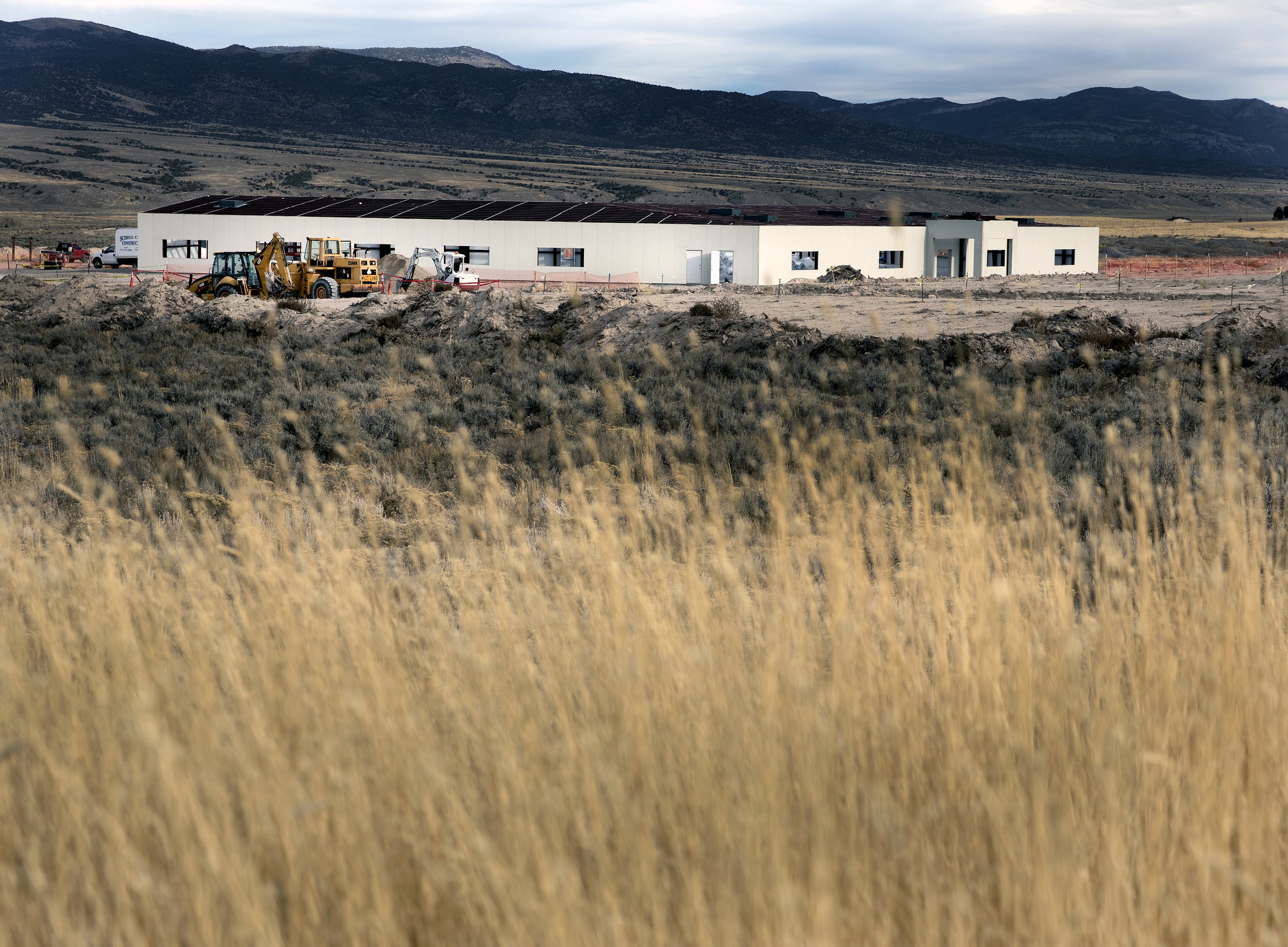
Learning Bridge Charter School’s new building sits on donated land, easing some of the project costs. The price tag is estimated to be $3 million, which officials said will be financed with the help of a loan. Despite a waitlist that has reached triple digits, the school isn’t expanding enrollment. Instead, Williams-Harper said the new building offers a different kind of expansion — more academic possibilities.
“We’ll be able to offer our students even more because we’ll have a new building, new things,” she said. “We’ll be able to do some new programming, but we will still have the same number of students.”
Her vision aligns with what leaders of the neighboring White Pine County School District say new facilities could do for their students, which is to create a better learning environment. They say two of the school district’s buildings, in particular, need an upgrade.
Up the street and around the corner from the new Learning Bridge building lies David E. Norman Elementary School. It was built in 1909. And on Ely’s main drag sits White Pine Middle School, circa 1913. For all the charm and history that come with these century-old buildings, there’s also a laundry list of maintenance headaches, said Paul Johnson, the district’s chief financial officer.
The district wants new buildings. The catch: money.
“I believe strongly there needs to be a new facility for our K-8 kids,” he said, referring to students in kindergarten through eighth grade. “We simply can’t do it ourselves. We need help.”
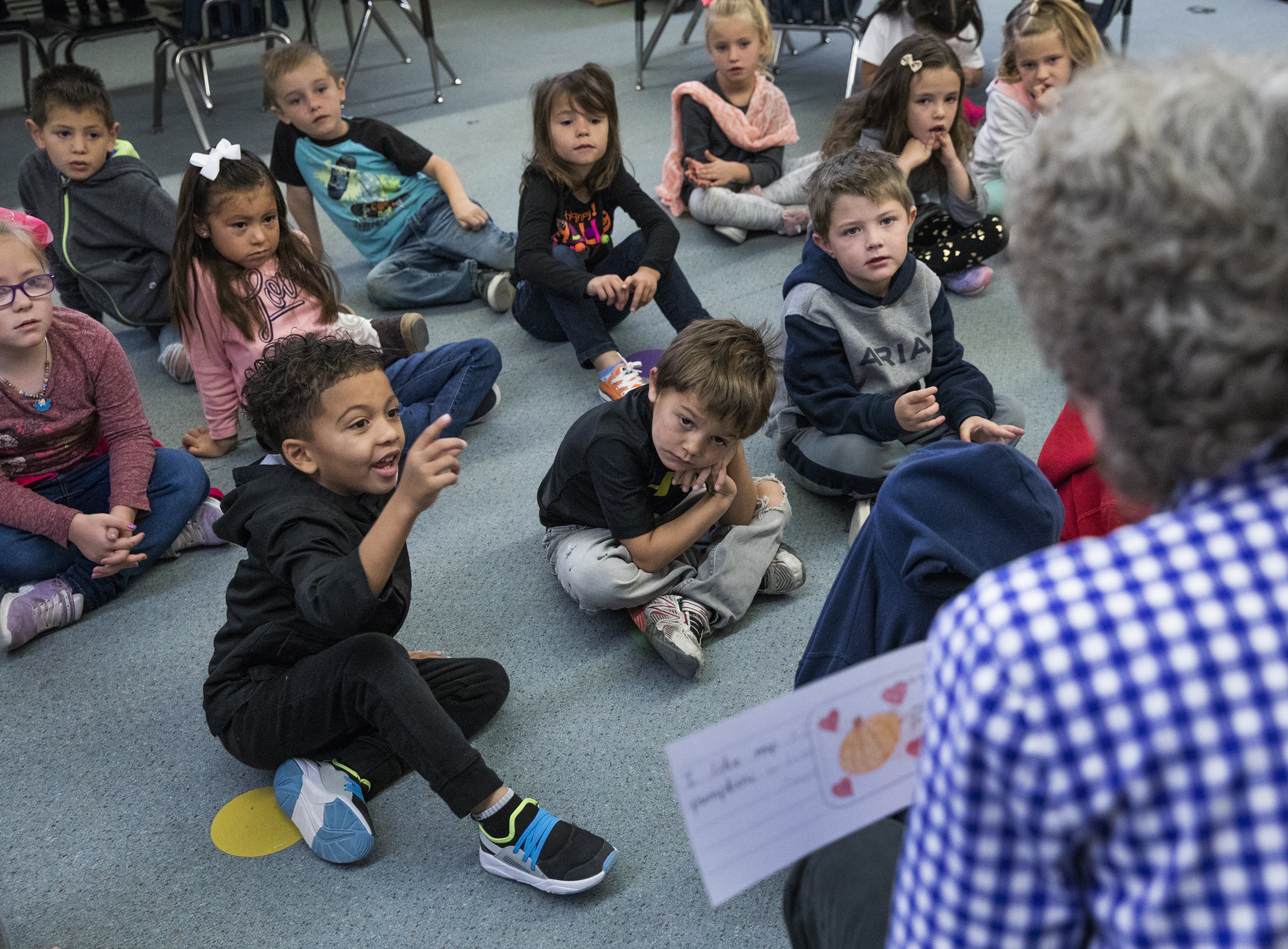
***
Around the time Norman Elementary School opened its doors, White Pine’s population — 7,441 in 1910 — was more than double that of Clark County. A copper discovery in 1906 fueled the growth, establishing Ely as a mining town. It originally had been settled as stagecoach station along the famed Pony Express.
As the decades passed, the roles reversed.
Las Vegas morphed into a major city, pushing Southern Nevada’s population higher and higher. Now, more than 3 million people call Nevada home, and nearly three quarters of those residents live in Clark County. By contrast, fewer than 10,000 people reside in White Pine County, which is roughly the size of New Jersey.
The White Pine County School District serves about 1,200 students who come from communities such as Ely, Baker, Lund, McGill, Cherry Creek and Ruth. If you judge the district by the state’s star rating system, it’s a mixed bag: There are three one-star schools, two two-star schools and two four-star schools, according to the latest Nevada School Performance Framework results, which grade schools on a five-star system.
Learning Bridge Charter School, meanwhile, has a four-star elementary and a five-star middle school.
The competition isn’t lost on White Pine school leaders, but when Superintendent Adam Young talks about the district, he frequently uses the phrase “world class.” That’s what he envisions the district becoming over time with the help of some new initiatives. Norman Elementary School this year started a STEAM academy, focusing on science, technology, engineering, arts and mathematics through inquiry and problem-solving. Districtwide, schools have rolled out a new writing program meant to boost those skills at every turn. And White Pine Middle School has launched a “Kindness Crew” to make positive interactions the norm.
“We really want to raise the vision of what education is supposed to be in this community,” Young said. “It’s a community where we are really working to expand what people expect out of education.”
Educators here know all too well that college can be a tough sell when recent graduates can snag entry-level mining jobs that pay more than $23 an hour. So as they rethink curriculum and instruction, they’re also eager to give the district a physical facelift as well. Research over the years has shown a link between school building quality and student achievement. A Harvard report that reviewed more than 200 scientific studies called the evidence “unambiguous.”
“The school building influences students’ health and academic performance,” the authors wrote. “Investing in school buildings is an investment in our collective future.”
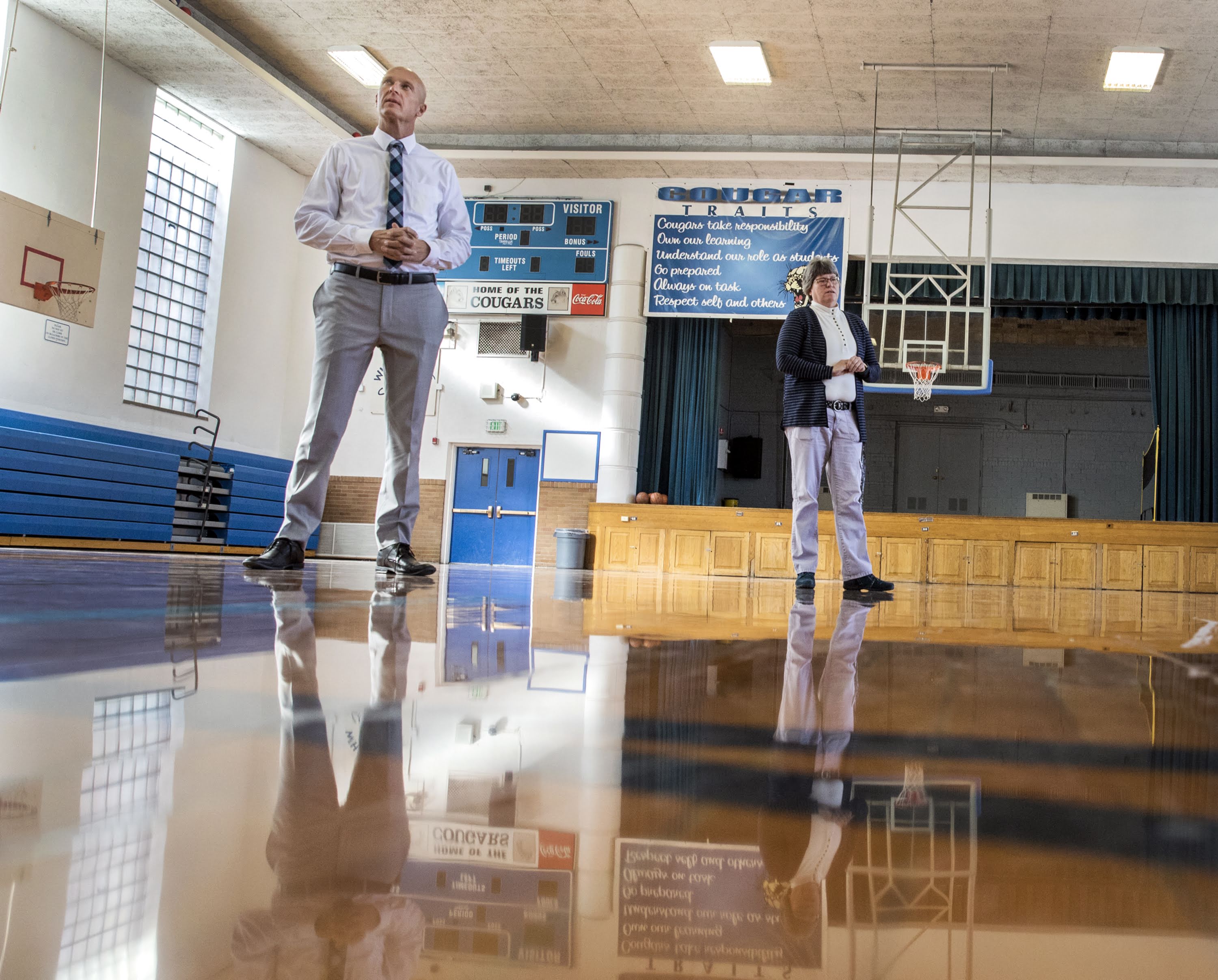
A tour of the two schools that have reached centenarian status reveals age-related issues down nearly every hallway. At White Pine Middle School, maintenance workers go through hazmat training because of asbestos tiles within the building. If one cracks, it must be disposed of in a way that prevents the fibrous minerals from becoming airborne and, thus, hazardous to students and staff members’ health.
The creaky, wooden gymnasium floor vibrates and sometimes takes the bounce out of basketballs. The district has banned large events, such as graduation, in the gymnasium on the advice of engineers, who are concerned about the floor’s ability to withstand that much weight. Elsewhere, lab workstations with broken sinks take up space in a science classroom.
And then there’s the issue of stairs. The three-story middle school has no elevator and only one entrance that meets the standards of the federal Americans with Disabilities Act. Entire grade levels have relocated to the first floor if a student has a disability preventing him or her from using the stairs. But on rare occasions in the past decade when movement between floors was necessary, staff members have carried students up the stairs, Johnson said.
Three different types of brick outline a hallway intersection in David E. Norman Elementary School. A similar patchwork quilt of tiles make up the floor. Up above, conduit lines the ceilings to make technology possible in a building that was constructed before televisions were invented.
Temperature control in the elderly building can be problematic, too.
“Some days we are wearing coats in the school,” the elementary school’s principal, Cammie Briggs, said.
District leaders say they can live with the cosmetic issues. But when things break, repairs for decades-old infrastructure can be costly or, in some cases, impossible if parts are no longer made. And with school safety a heightened concern nowadays, the buildings pose even more challenges given their many windows and limited sightlines.
“Those schools have served the public well,” Johnson said. “But I think there comes a time when the structural limitations of the facility and the objective evaluation of the facility should be the overriding criteria of whether a school gets replaced.”
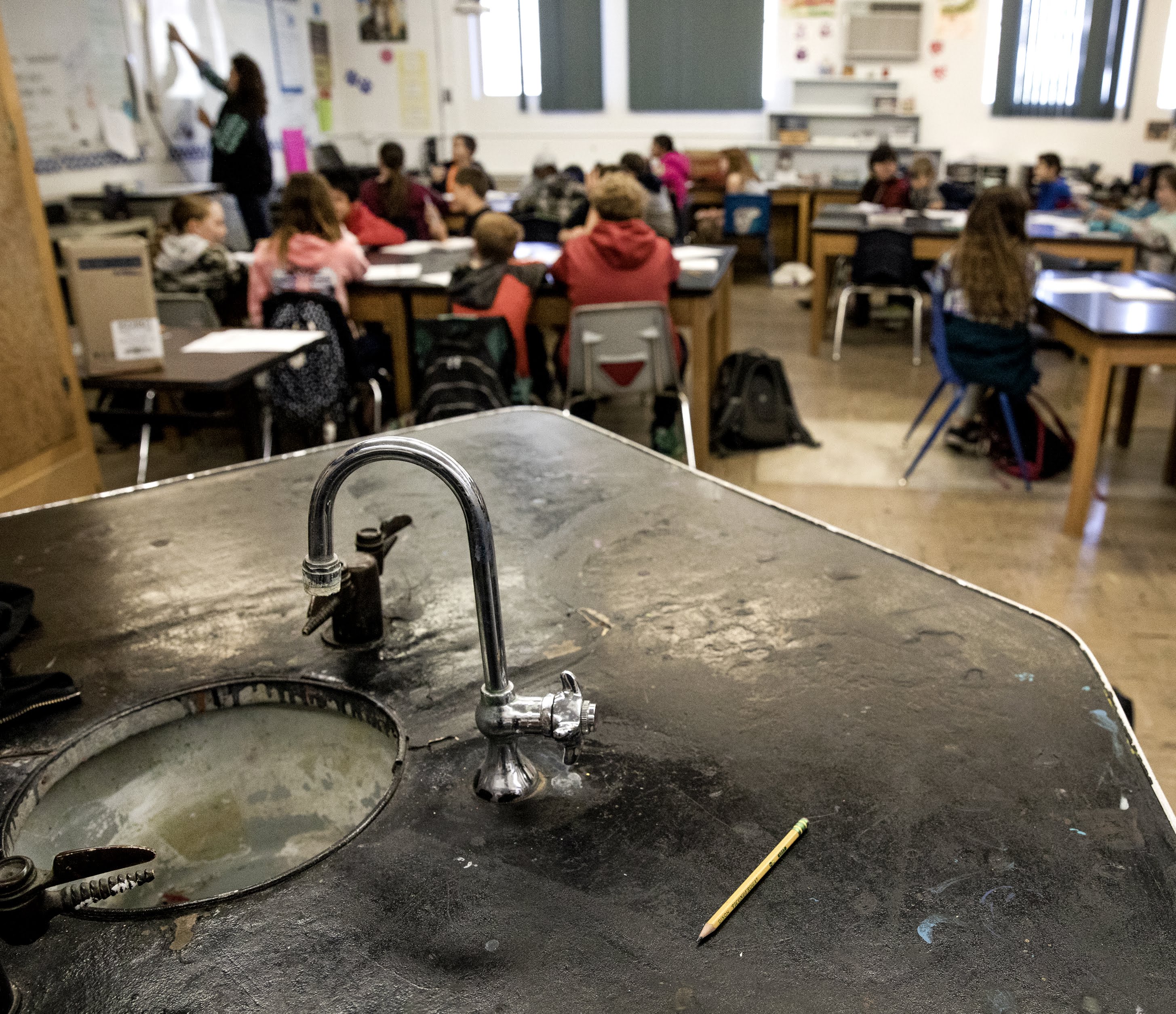
***
Concerns related to capital costs plague districts beyond rural White Pine County.
A four-hour ride south, in Las Vegas, the Clark County School District is grappling with a $6 billion backlog of capital and modernization needs. But the large, urban district has a bond-funded Capital Improvement Program that, despite not taking into account all capital needs, at least provides money for constructing new schools. The district opened two new schools and three replacement schools this year.
Officials from Nevada charter schools have been lobbying for funding, too. While Learning Bridge Charter School is on the cusp of welcoming students to a new building, other charter schools don’t have the funds to do so. Nevada charter schools don’t receive taxpayer funding for facilities.
This issue isn’t isolated to traditional public or charter schools in Nevada. It has surfaced on the national stage, too. Several presidential candidates have unveiled platforms that would funnel more federal money to education infrastructure following ramped-up pressure from advocates who have called for increased financial assistance. The [Re]Build America’s School Infrastructure Coalition is one organization that has been on the bandwagon, campaigning for a federal infusion of money to modernize education facilities. The coalition points out that the federal government pays for less than 1 percent of school capital construction costs.
Federal change could be years down the line, though, which is why White Pine County School District leaders are appealing to the state for help. They say they’re financially stuck.
“The solution cannot be, ‘Continue to do as you’re doing for the next 100 years,’ because, conceivably, there will not be another school built in this county in my lifetime,” Johnson said.
Historically, Nevada has put little or no state dollars toward school capital needs. The obligation has rested with the locality. But White Pine County reached its statutory property tax cap of $3.64 for every $100 of assessed value in 1997, limiting its bonding capacity. Other counties are in the same boat.
In 2008, voters approved a rollover bond initiative that provided roughly $7 million, which went toward maintenance needs across the White Pine County School District but wasn’t enough to cover the cost of building a new school, Johnson said. District officials peg the cost of a new school at $25 million to $30 million — a figure that would include everything from grading and construction to parking lots and playgrounds.
Over the decades, Nevada lawmakers have commissioned various studies pertaining to school capital costs, but the recommendations largely went nowhere. For instance, the SAGE Commission — the abbreviated name for the Spending and Government Efficiency Commission for K-12 Education — issued a report in January 2017 that included eight recommendations for capital construction and maintenance costs. One of those recommendations was to inject money into the Fund to Assist School Districts in Financing Capital Improvements, born out of the 1999 Legislature.
Johnson said the Fund to Assist School Districts in Financing Capital Improvements resulted in a grant to White Pine County that allowed it to build a new K-12 school in the tiny town of Lund, add air conditioning to the west wing of White Pine Middle School and upgrade some earthquake protection infrastructure. The state fund also helped finance Panaca Elementary School in Lincoln County.
The Lund school opened in 2001. The fund has since gone dry and unreplenished.
This year, legislation backed by Republican state Sen. Pete Goicoechea — whose large district encompasses White Pine County — took a step toward changing that. Senate Bill 233, which Gov. Steve Sisolak signed into law, softens the requirements for obtaining money from the Fund to Assist School Districts in Financing Capital Improvements. It eliminated a prior eligibility requirement that school districts be located in a county with declining assessed valuation of taxable property.
“I think we’ve made it where they can qualify now,” Goicoechea said. “We just need to put some money in.”
If Goicoechea wins re-election, he said that’s his next quest — lobbying the Legislature to make an appropriation to the fund. A $20 million to $30 million infusion, small in the grand scheme of the state’s overall budget, could go a long way toward updating education infrastructure, particularly in tax capped-counties like White Pine, he said.
“It’s just critical in my mind,” he said, before offering an analogy. “The better the plant, the better the product. If we’re coming out of 100 year facilities that you can barely keep warm, it’s pretty hard to teach those kids.”
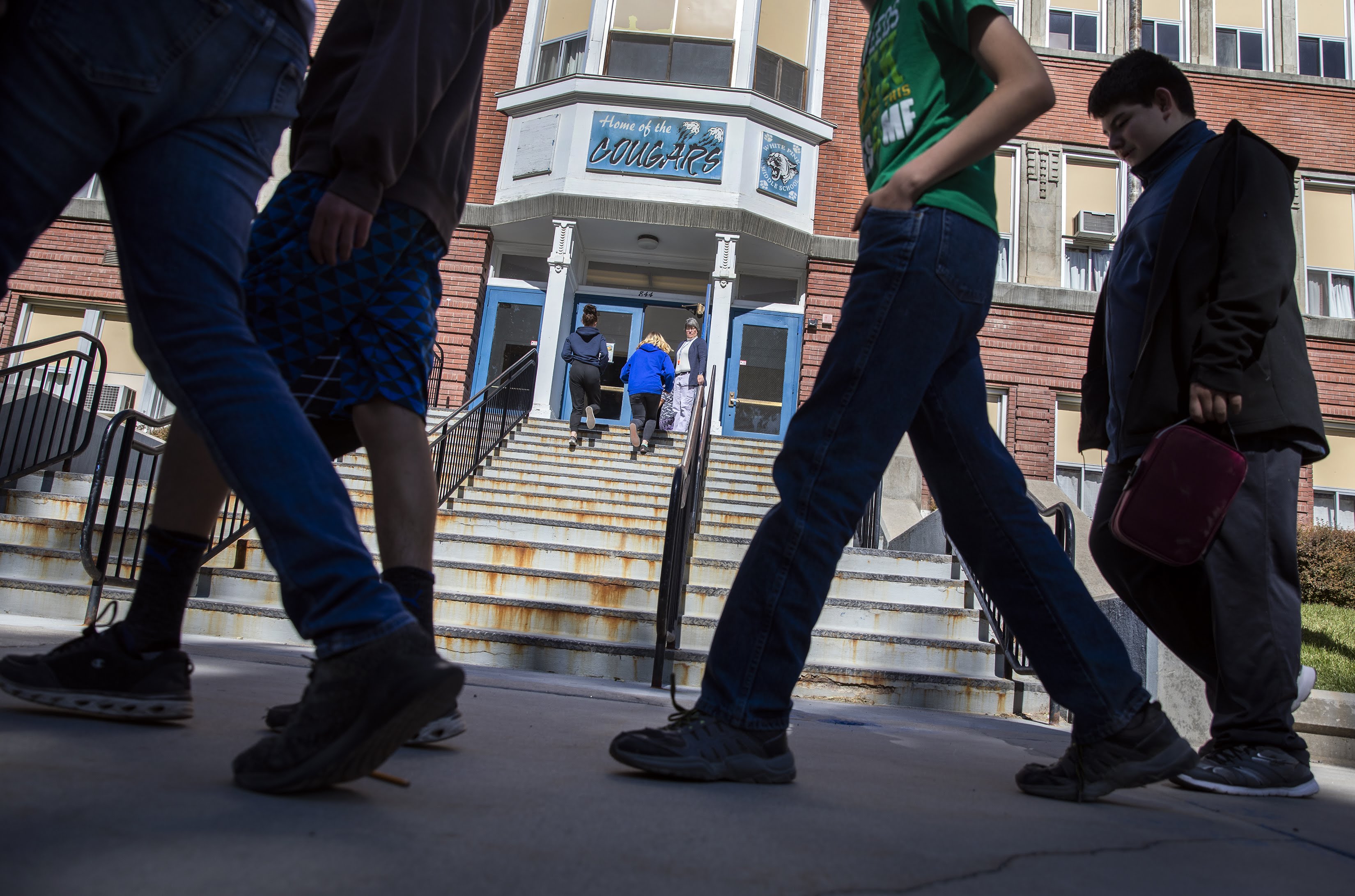
***
The hallway chatter in White Pine Middle School as students trudge to class likely isn’t focused on the walls surrounding them. But that doesn’t mean the young teens haven’t noticed the modern school facilities that exist in other communities.
Student athletes travel several hours to compete against their peers in other remote Nevada locales. Rihanna Oxborrow, an eighth-grader who has grown up in White Pine County, plays soccer, track and basketball. She said it was “shocking” to discover the educational facilities and athletic fields that exist in other districts. White Pine Middle School does not have any outdoor recreation area or fields, so student athletes use the high school’s facilities.
“It’s pretty cool seeing middle schools that have some fields and stuff,” Oxborrow said. But she hedged that observation with this fondness for her existing school: “Some things are just a little falling apart, but it’s still really cool to walk around to the rooms and see just how buildings were designed a while ago.”
Her sentimentality for the brick behemoth, which has seen thousands of students come and go over the years, isn’t uncommon. White Pine Middle School still serves as the site for class reunions every Fourth of July.
As much as district leaders and many community members desire new schools, Superintendent Adam Young said underlying concern exists regarding the fate of the older buildings, which he described as an “iconic” part of Ely history.
“Does it get boarded up and then it’s a blight on Main Street?” he said, referring to White Pine Middle School. “There are concerns about what that will be.”
There’s no funding yet for new buildings and, thus, no concrete answer to that question.
And school leaders say they’re not pinning the district’s academic success to if and when that money materializes.
“You can have outstanding instruction wherever you are,” Young said. “We are not of the mindset that a new facility is going to solve all our problems.”